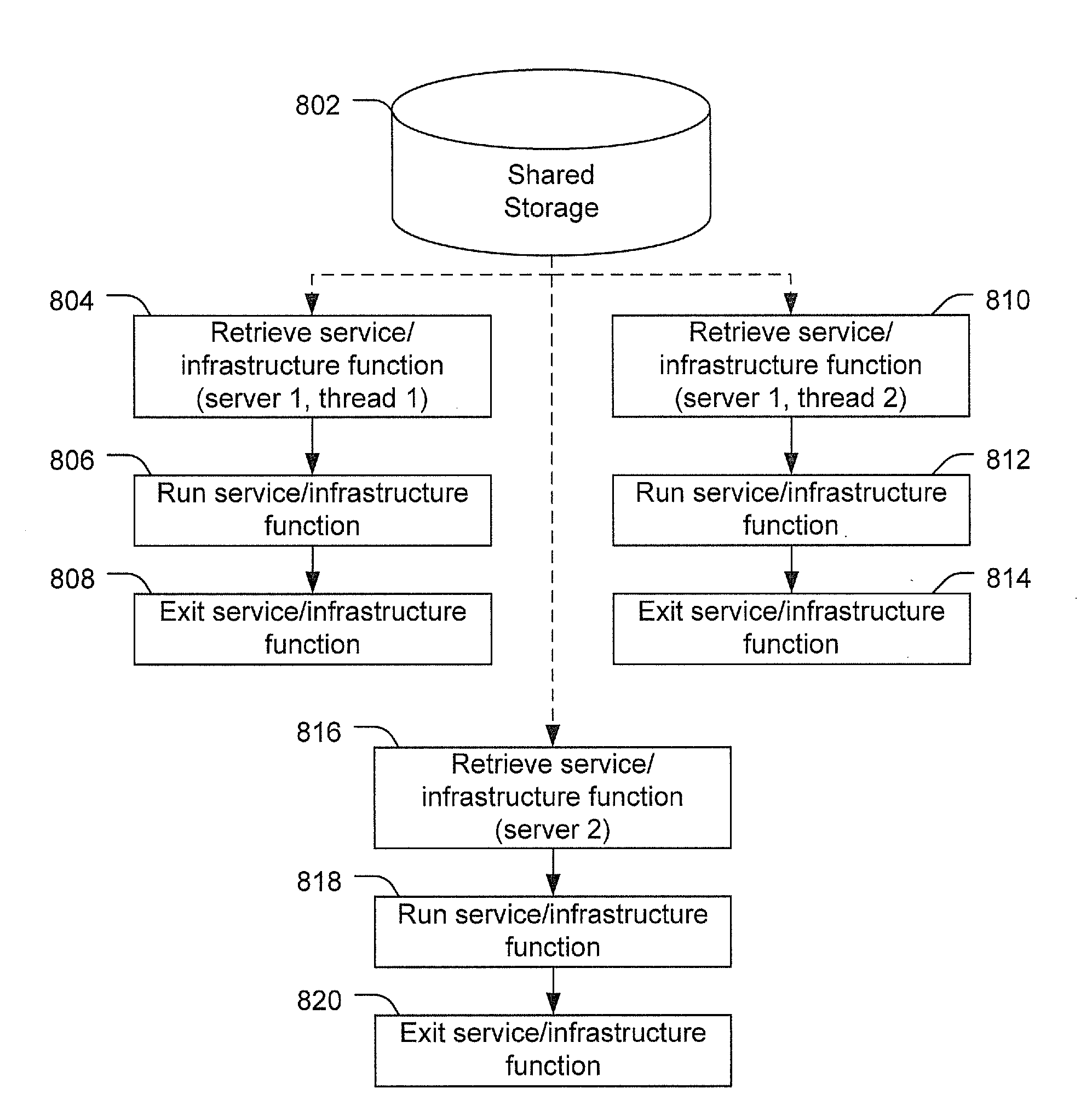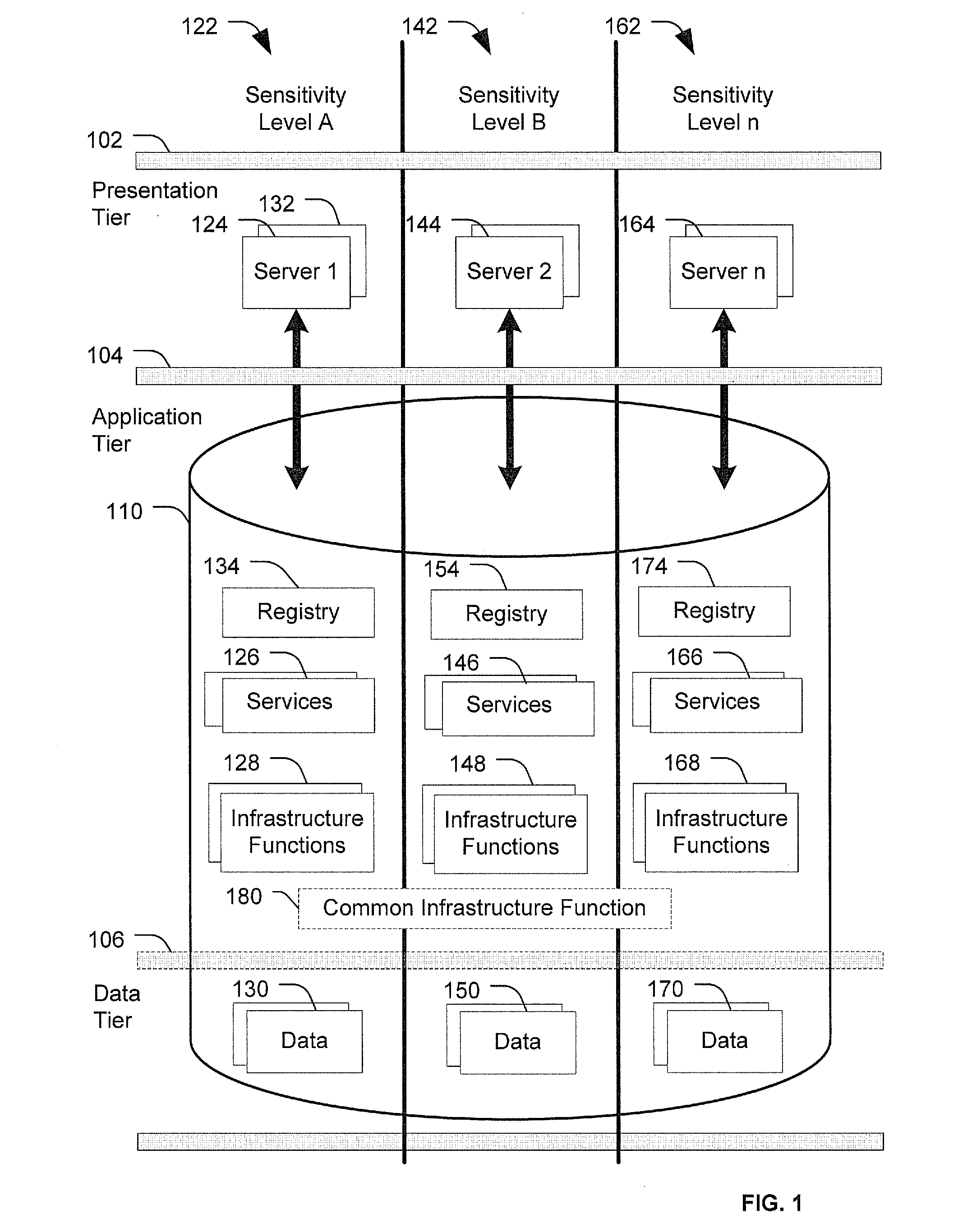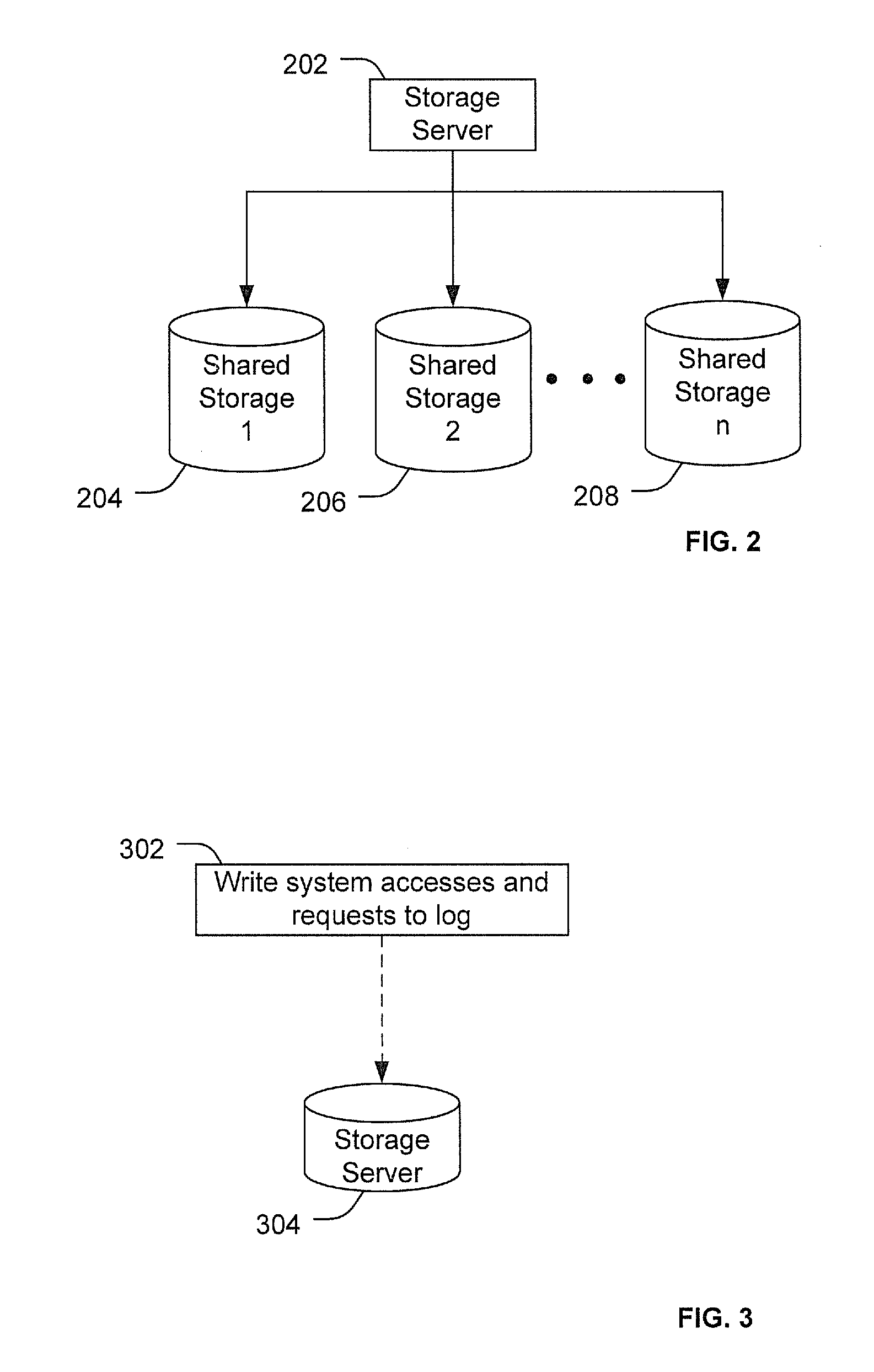Computer architectures using shared storage
a technology of shared storage and computer architecture, applied in the direction of memory address/allocation/relocation, multi-programming arrangements, instruments, etc., can solve the problem of increasing the risk that sensitive information may be unintentionally disclosed to unintended parties, affecting the security of certain esb and soa architectures, and difficulty in securing soa or enterprise service buses over disparate systems. the effect of reducing the cost of duplicating a dedicated system
- Summary
- Abstract
- Description
- Claims
- Application Information
AI Technical Summary
Benefits of technology
Problems solved by technology
Method used
Image
Examples
Embodiment Construction
[0049]Embodiments of systems and methods disclosed herein provide computer architectures and methods using shared storage. In a particular embodiment, functions of an Enterprise Service Bus (ESB) are provided via the shared storage. For example, one or more infrastructure functions of the ESB may be delivered by producers to consumers through the shared storage. To illustrate, traditional ESBs may connect and mediate communications and interactions between services. Thus, an ESB over shared storage, as described herein, may mediate communications and interactions between services via the shared storage.
[0050]In a particular embodiment, ESB is a computer system that provides for communication between software applications using a universal message format that can be used to implement a service-oriented architecture (SOA) within and / or between enterprises. ESB may be implemented by including a software layer between software applications and by use of an asynchronous messaging system ...
PUM
 Login to View More
Login to View More Abstract
Description
Claims
Application Information
 Login to View More
Login to View More - R&D
- Intellectual Property
- Life Sciences
- Materials
- Tech Scout
- Unparalleled Data Quality
- Higher Quality Content
- 60% Fewer Hallucinations
Browse by: Latest US Patents, China's latest patents, Technical Efficacy Thesaurus, Application Domain, Technology Topic, Popular Technical Reports.
© 2025 PatSnap. All rights reserved.Legal|Privacy policy|Modern Slavery Act Transparency Statement|Sitemap|About US| Contact US: help@patsnap.com



